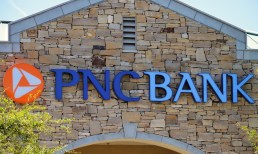“We want to ensure that we’re going to control our own destiny,” he said. “And I think this funding will ensure that we take a very long-term view of the business and will allow us to be aggressive, because this is definitely eCommerce prime time. The next three to five years are going to be defining years for eCommerce technology, and we truly believe we have a shot at building one of the most important companies in the history of commerce.”
Yotpo’s outlook is so bullish – from both its CEO’s perspective and from the venture capital perspective – because the company is creating a compressed marketing stack for eCommerce, whether it’s for Patagonia or for an up-and-coming DTC sneaker brand like Brooklyn, New York-based GREATS.
Within its platform, brands can create a single source of insights including unified customer content, cross-product behavior data, deeper audience segmentation and predictive analytics. This snapshot into how customers are engaging across different marketing touchpoints has produced a 300 percent increase in customers during the 2019 calendar year and a 170 percent increase in revenue during the pandemic. As Tagrin noted, every company is now an eCommerce company.
The CEO’s enthusiasm aside, the firm’s latest round will be used to advance Yotpo’s mission with an integrated product set of reviews, visual user-generated content (UGC), loyalty, referrals and SMS marketing, which helps brands of all sizes drive customer lifetime value.
“It will allow us to continue investing in the platform and helping entrepreneurs, which is something that is super important for us,” Tagrin said. “It’s not just a specific customer – it’s actually an array of smaller brands that are growing up into the big brands of tomorrow. In the last quarter, we brought in the biggest deals in the history of the company, because a lot of bigger brands are looking to consolidate their marketing stack, optimize costs and maximize the customer experience. I think eventually, we need to have every brand, from Nike to a small T-shirt manufacturer.”
Advertisement: Scroll to Continue
Yotpo has several case studies, which it says prove its effectiveness. For example, carbon-neutral apparel company Ministry of Supply doubled its referral revenue after adding both loyalty and referral programs. Using reviews and visual user-generated content, Leatherman collected more than 22,000 reviews and found that 48 percent of shoppers would return to the site after seeing UGC.
According to Yotpo, brands that leverage three or more solutions in its platform, such as Steve Madden, can see 50 percent faster order growth than brands that leverage just one solution. Tagrin said part of the success has been through its focus on solving eCommerce pain points.
“We learned that the biggest pain point is the size of the teams that have to produce so much scale,” he noted. “They are understaffed, under-budgeted and probably using too many applications. We help them achieve magical consumer experiences. Internally, we like saying that Shopify manages your business, and we manage your customers.”
One of the more interesting things about the Yotpo approach is that Tagrin puts mobile and web-based eCommerce in the same category. The company recently published a research report that shows how much shoppers’ perspectives on mobile engagement have shifted. Email still holds the top spot, with 46 percent of consumers saying it’s their preferred way to receive marketing communications. However, 41 percent now prefer SMS; social media is a distant third at 8 percent. According to the study, 48 percent of consumers have already signed up to receive text messages from at least one brand. The trend toward text as a marketing tool accelerated when the pandemic hit.
“We saw — during lockdown, especially — that people were captive to their screens and open rates went through the roof,” Tagrin noted.




